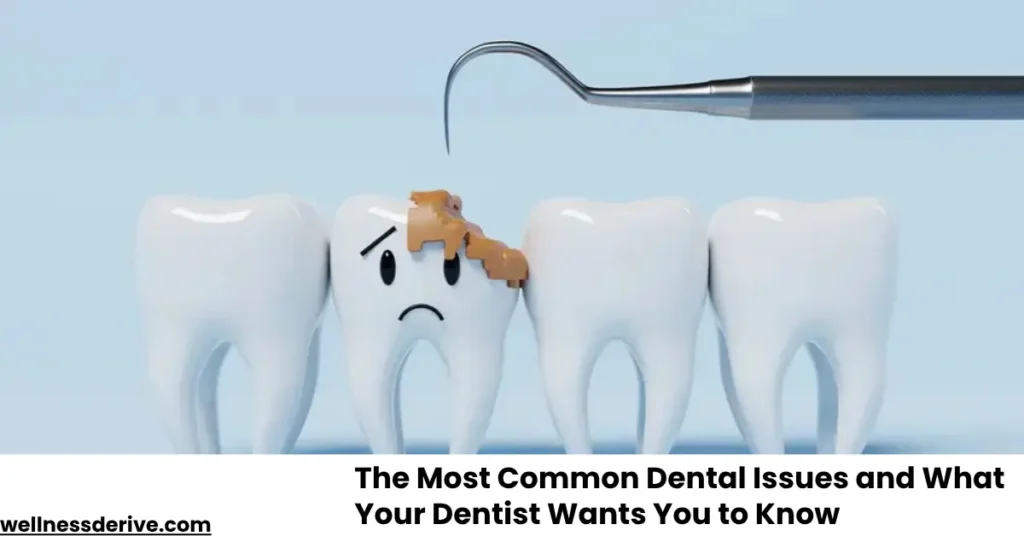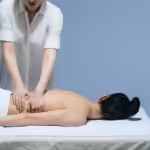It is interesting how you never seem to notice your teeth until something starts to hurt. You might just miss a check-up or postpone that cleaning for a couple of months (or years) with the “It isn’t a big deal!” rationalisation. But here’s the truth: most dental problems don’t just land on your doorstep like a bolt out of the blue on a blazing play set. They creep in and take their toll while you are distracted by other things.
The good news? Common dental problems are preventable and if detected early can be solved. And your dentist? They’re not there just to stick their hands around and preach you about flossing. They want you to know what´s really happening with in your mouth, and how simple day today habits can make all the difference.
Let’s start with one problem that everybody has heard of, but sadly, not everyone takes seriously.
Tooth Decay is not just a Kids’ Problem
Cavities have such clout as a childhood problem – in part because of all of those colourful toothpaste commercials and sugar warnings we all received when we were growing up. However, in real terms, the problem of tooth decay in adults is as frequent. Quite often, even more so, when enamel erodes and the effects of sipping one cup of coffee or wine after another during a day are felt.
Tooth decay occurs when sugar and starches in your mouth are acted upon by bacteria resulting in acid, which eats through the enamel. That acid eats away at your teeth, forming holes that can go deeper and penetrate the inner sensitive part. If not treated, decay may result in infections, abscesses, or eventual tooth loss.
This is what your dentist would like for you to know: quite frequently cavities are not painful when they first appear. You may have several forming and you will not feel a thing about it. That’s why regular checkups matter. X-rays and exams can diagnose decay when it is still early enough so you won’t need a root canal in the future.
In addition, enemy is not only candy. Examples of factors causing decay include acidic drinks and dry mouth, even frequent snacking. Therefore, next time you will think, “It’s just a little sweet,” please remember that your enamel may be silently losing the battle.
Gum Disease Begins Small, Ends BIG
Come on – the majority of us don’t give much thought to our gums unless they start bleeding or we catch a glimpse of them when we are looking in the mirror and they are puffy. Gum disease is one of the most common dental issues there is, and it has a sneaky way of growing slowly.
It normally begins with gingivitis, which is a minor gum inflammation due to the accumulation of plaque. Perhaps your gums are tender or you have the slightest bit of blood when flossing. That’s your signal to do something about it. If not treated, gingivitis can lead to periodontitis, a more advanced condition of gum disease that attacks the bone and tissues that hold teeth in place.
What your dentist is really trying to tell you is that not all gum diseases hurt but still might be destroying your teeth severely. All these can be triggered by neglected signs such as receding gums, chronic bad breath, and loose teeth.
The upside? Captured in time and it can be reversed. Consistent cleaning, improved brushing, and consistent use of floss or water flosser can make all the difference. Dentists are not just looking at your gums to pass time; they are looking for early signs that could preserve your smile.
Sensitivity Can Signal Deeper Issues
Have you ever cringed when a spoon of ice cream touches a certain tooth? Or drink hot coffee and have a sudden zing? That type of dental sensitivity is more than an annoyance — it’s a tipoff that something is wrong.
The sensitivity of the teeth is an indication of worn enamel, exposed roots, or even microscopic cracks in the teeth. This can also be due to excessive brushing or grinding of teeth at night. Others live with it after learning to live with it because they believe it’s just something they need sometimes to cope with. But sensitivity is hardly ever just some random quirk – there is generally a cause.
Below is what your dentist wants you to know: failure to observe sensitivity may cause greater troubles. It could be your initial indication of decays, gum recession, or erosion of enamel. And the solution to the problem can be as easy as taking a toothpaste that is designed for this condition or changing the way you brush.
So if cold water sets your teeth on edge, do not bear it. Tell them about it at your next visit – it might spare you from more invasive ( and more costly) procedures in the future.
It is more common than you can imagine to have cracked or damaged teeth.
You do not need to get hit in the face with a hockey puck in order to end up with a cracked tooth. Sometimes even everyday habits such as chewing ice, biting pens, or grinding your teeth can chip away at enamel or make small cracks. Later on, those little cracks can cause pain, sensitivity and even infections.
Some of the cracks are quite apparent -you feel a sharp edge of your tongue or you notice a chip in the mirror. However, some are below the surface and can be identified only after a dental test or x-ray.
Conclusion
Here’s the thing: dental problems are extremely common but that doesn’t mean they are part of existence. Most problems: cavities, gum disease, sensitivity, damage, even bad breath, begin small and are highly rectifiable if detected early.
What your dentist actually wants you to know is that they’re on your team. They’re not waiting to scold you- they’re hoping to catch things before they become painful or expensive. Preventative maintenance, open chats, and periodic visits can take your smile a mile further.
Waiting for something to hurt is too late. Your mouth is attempting to inform you that something’s wrong – it’s your turn to listen, and your dentist’s turn to help. If you’re one of those experiencing one of these common signs or simply haven’t had a check-up in a while, it’s now the right time to contact a dentist at Prahran and address your oral health.
Disclaimer: The content on Wellness Derive is for informational purposes only and not a substitute for professional medical advice, diagnosis, or treatment. Always consult a healthcare provider for medical concerns.



